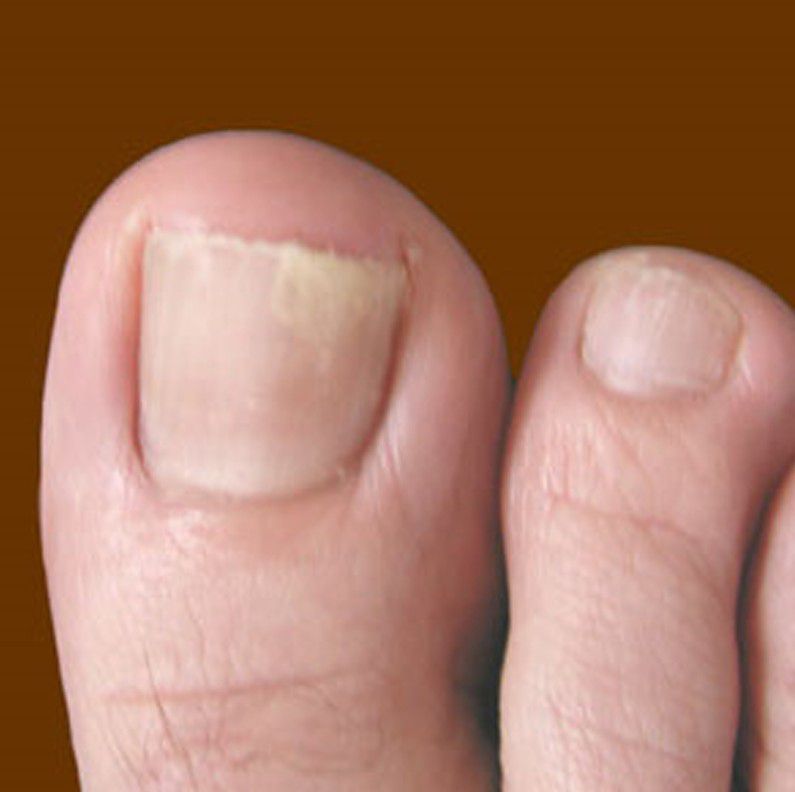Toenail fungus is a fungal infection that affects the toenails in which they appear thicker and ragged having an abnormal color that ranges from white, yellow or black. This is known scientifically as Onychomycosis and known to affects 6-8 percent of the population. Onychomycosis is caused by dermatophytes, a common group of fungi. Here are the four types of fungi.
Digital Subungual Onychomycosis
This is the most common toenail fungus according to the OurHealhtNetwork. This infection is usually cause by the fungus Trichophynton rubrum. This toenail fungus starts at the tip of the toe affecting the nail bed and beneath the nail plate. The color of the nail may become green, yellow or white or a combination of these three shades. It may also become thickened and rough and begin to pull out from the nail bed. Once the nail becomes too thick, it may rub against your shoes and this can be painful. Those who experience this should seek medical attention for proper diagnosis so that proper treatment can be done. Topical treatment is often used with this type of fungus.
White Superficial Onychomycosis
This is the second type of toenail fungus infection and is caused by the fungus Trichophyton mentagrophytes. It appears first as white patches on the surface of the toenail and may spread. You can scrape this part easily but in the late stages of the infection, the entire nail turns into white that it looks like it is falling apart and dry. However this type of toenail infection does not hurt. Topical treatments may also be used but in cases these do not work, oral medicines are prescribed.
Proximal Subungual Onychomycosis
This is the least common type of toenail fungus and is caused by the same fungus responsible by the most common type which is the trichophyton rubrum. This type of toenail fungus is often found in people who suffered from a weakened immune system due to some illnesses, injuries and some medical treatments. The fungus starts close to the cuticle or at the root of the toenail. It goes deeper into the nail and appears as yellow or white discoloration. At the late stage of the infection, the nail becomes entirely discolored, crumbly and thick. Medical treatment is usually advised for this type of toenail infection. For more information visit here.
Candida Candida onychomycosis
Candida Candida onychomycosis is another toenail fungus which is caused by candida albicans. This is a diploid fungus which is related to yeast. In the early stage of infection, nail seems to be cloudy and the skin around it is painful and inflamed. In the later stage, the nail becomes thick and is deformed. It is also accompanied by the formation of pus at the edges of the nails. This type is common to around 80% among healthy people and it does not cause any problem until overgrowth occurs. Antibiotics can be used in treating this type of toenail fungus and should be under the care of a medical professional.There are 4 types of toenail fungus. They are common in the sense that they all fungi but they have different form of treatment. This is the reason why you should have your toenail fungus diagnosed by an expert before treating it.

/image%2F1996208%2F20160305%2Fob_54e20f_allison.jpg)



/image%2F1996208%2F20180314%2Fob_be810b_4663928300000578-0-image-a-1-151077679.jpg)
/image%2F1996208%2F20170922%2Fob_b43972_female-patients-dr-hodgkinson-s-before.png)
/image%2F1996208%2F20170919%2Fob_71473c_haemorrhoids-piles-hemorrhoids-hemroid.jpg)
/image%2F1996208%2F20170914%2Fob_a5ef66_6b2f3320fbfdf418e9a4ac62a36cfc55-grey.jpg)
/image%2F1996208%2F20180314%2Fob_be810b_4663928300000578-0-image-a-1-151077679.jpg)
/image%2F1996208%2F20170922%2Fob_b43972_female-patients-dr-hodgkinson-s-before.png)
/image%2F1996208%2F20170919%2Fob_71473c_haemorrhoids-piles-hemorrhoids-hemroid.jpg)
/image%2F1996208%2F20170914%2Fob_a5ef66_6b2f3320fbfdf418e9a4ac62a36cfc55-grey.jpg)